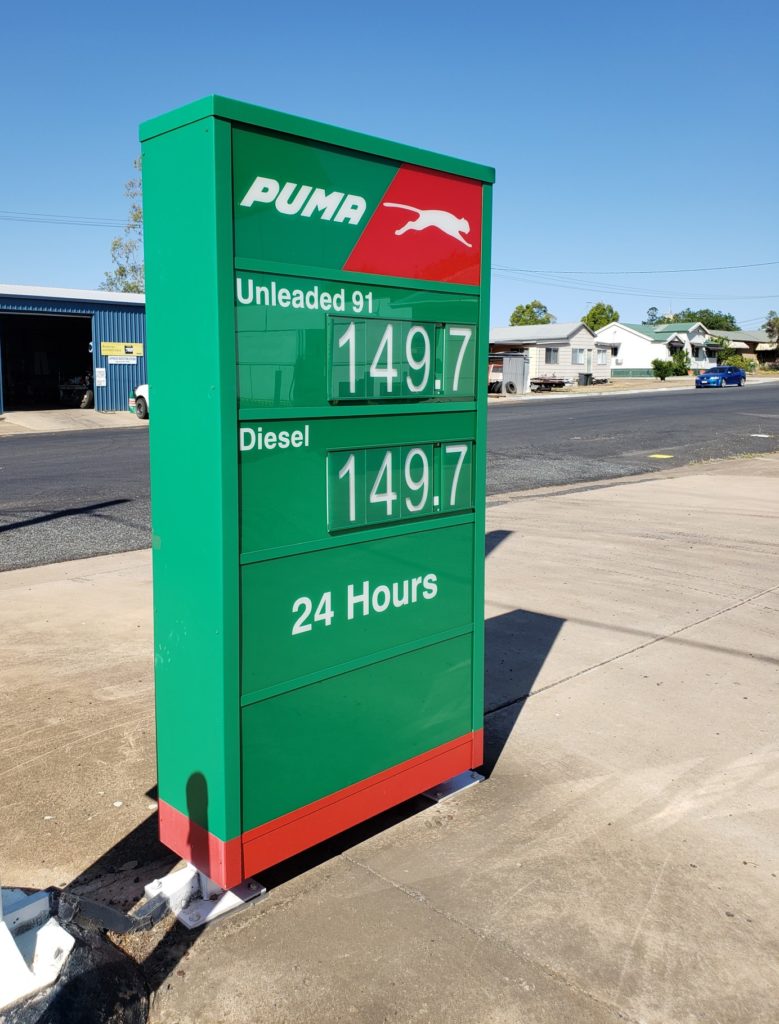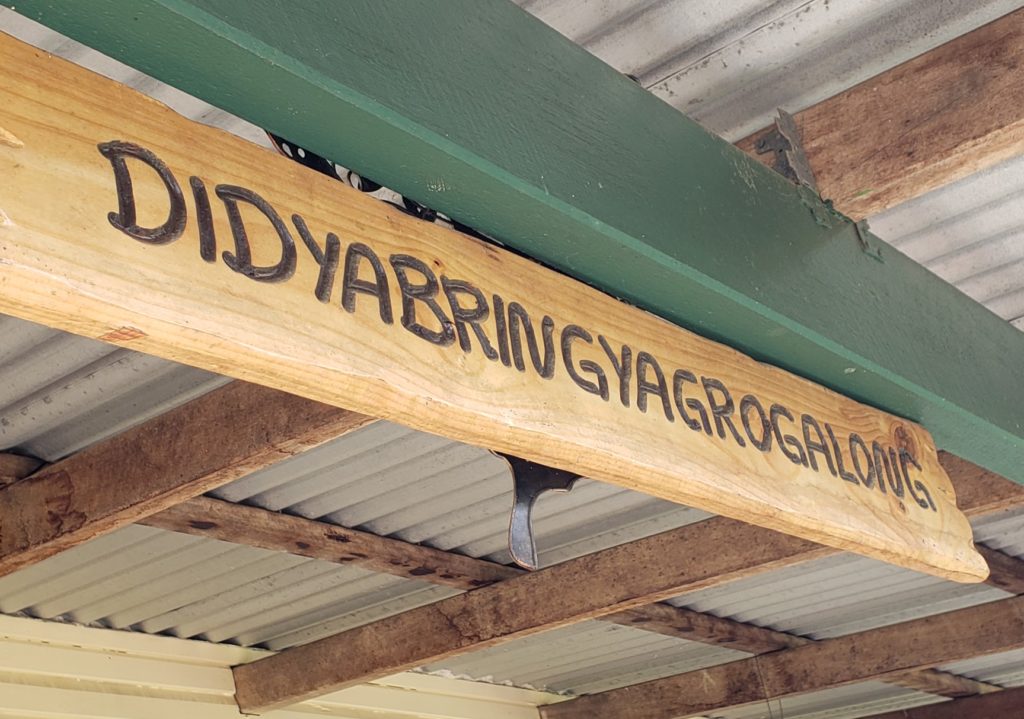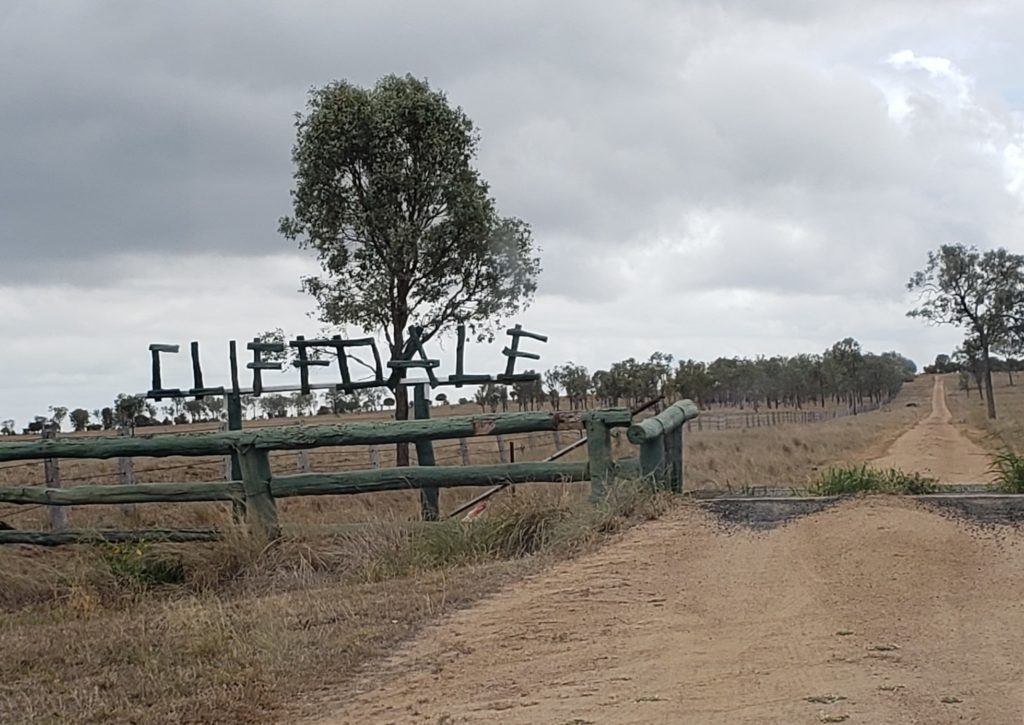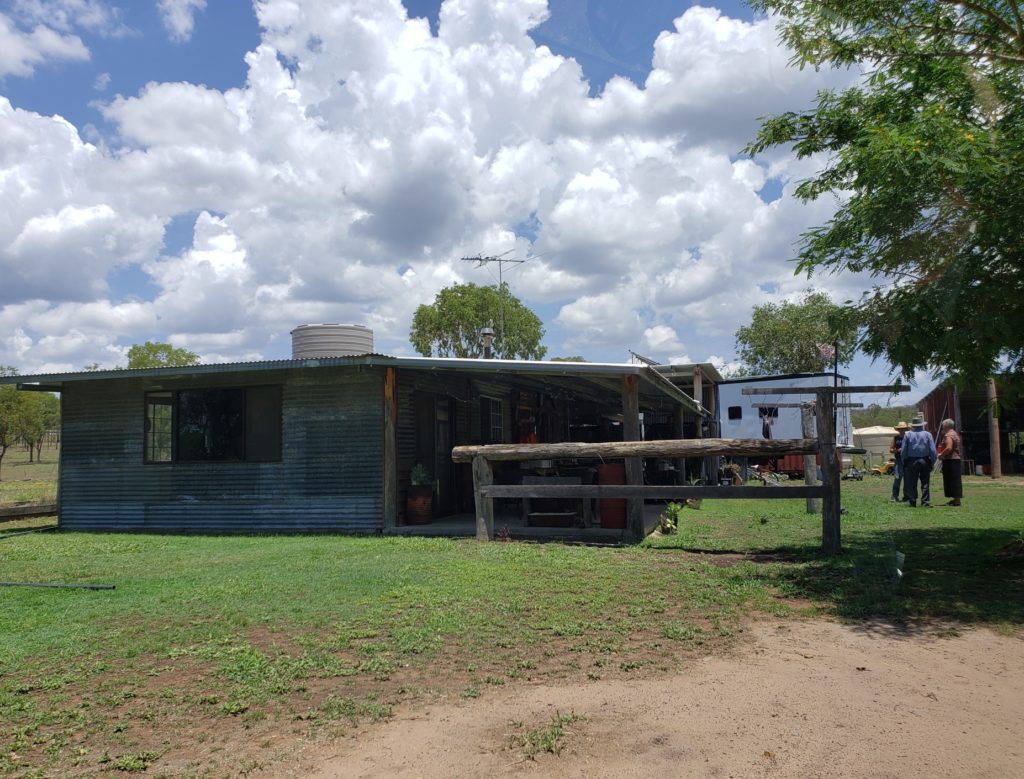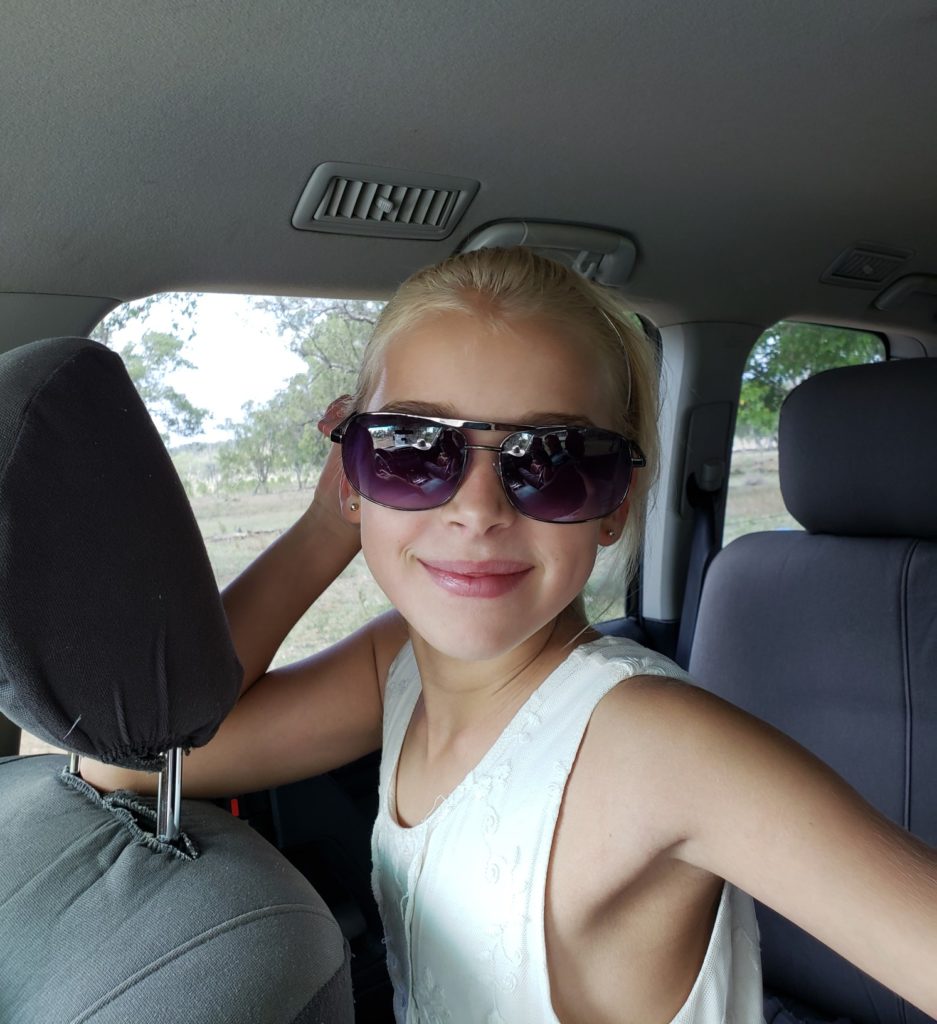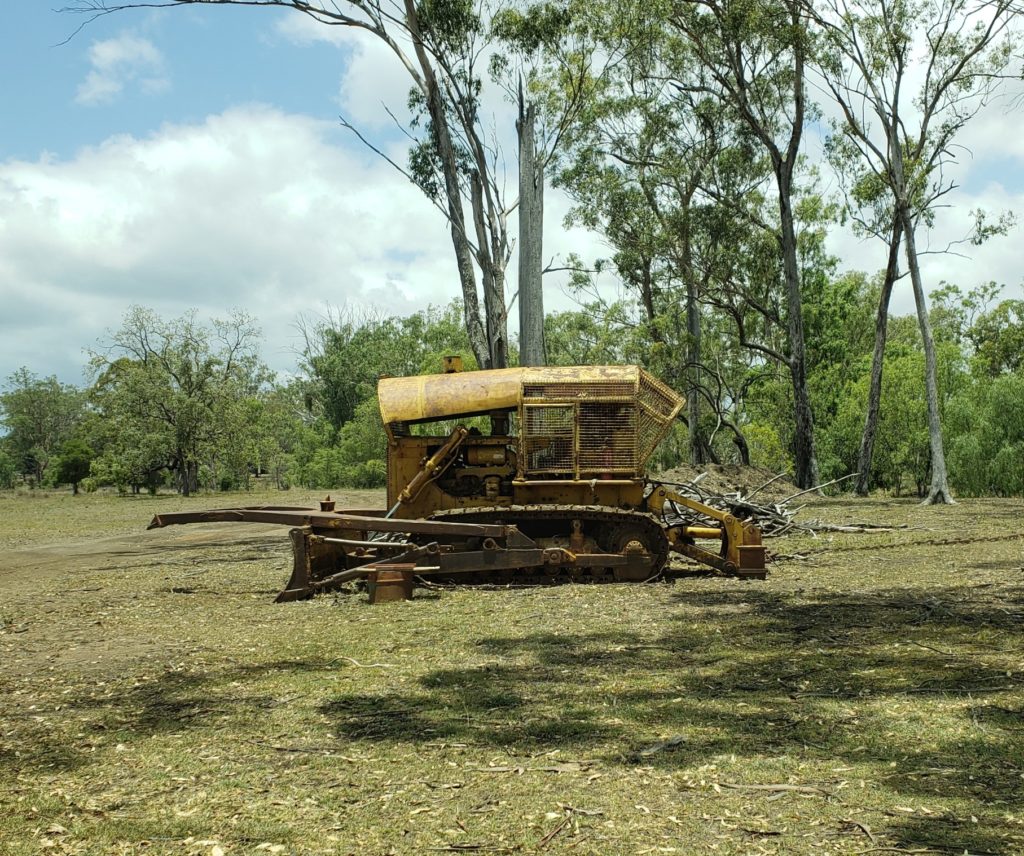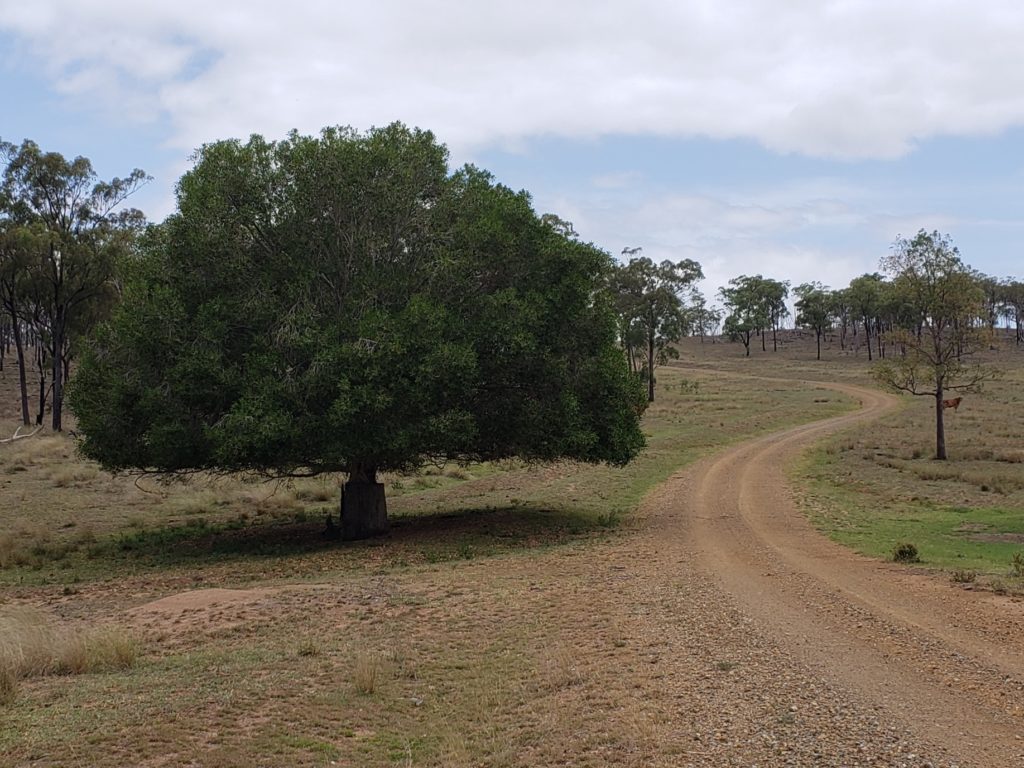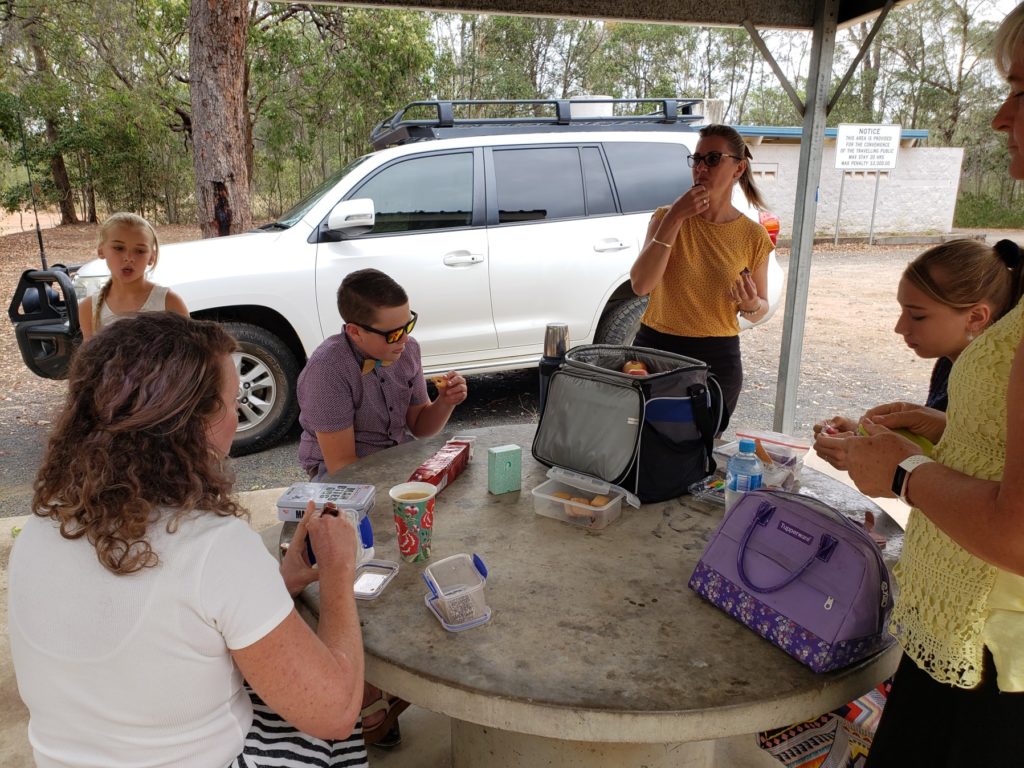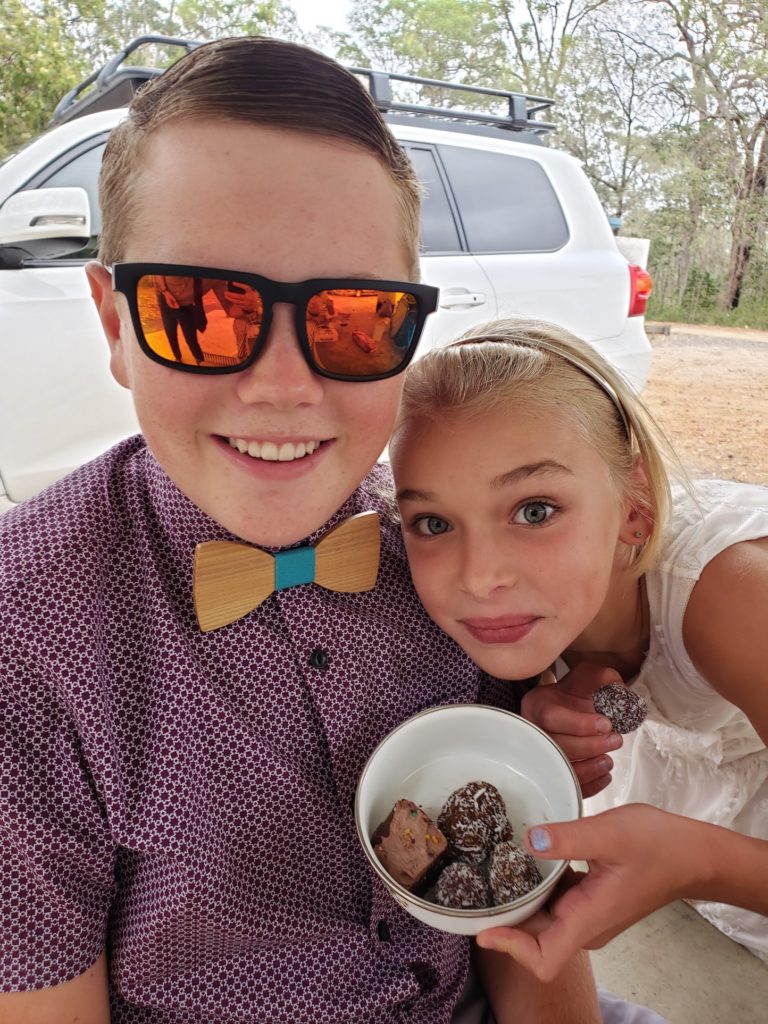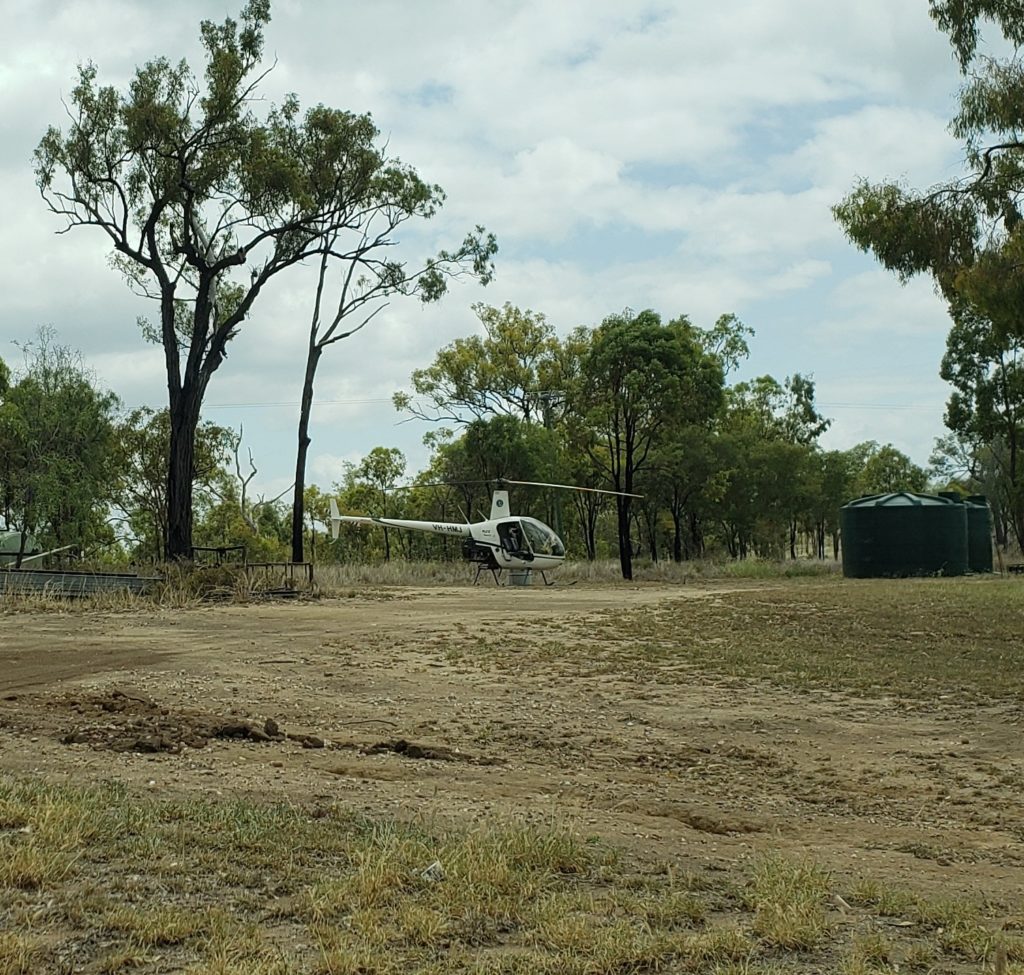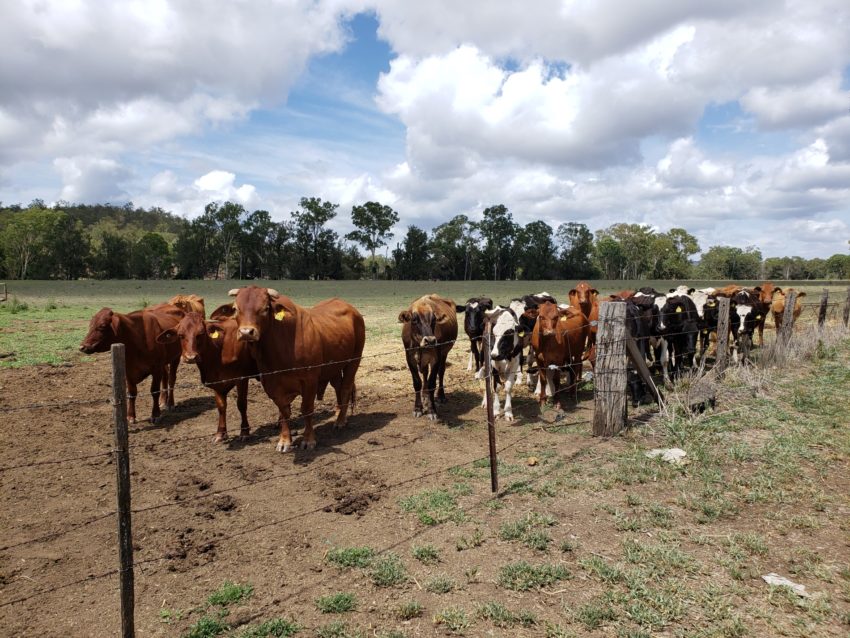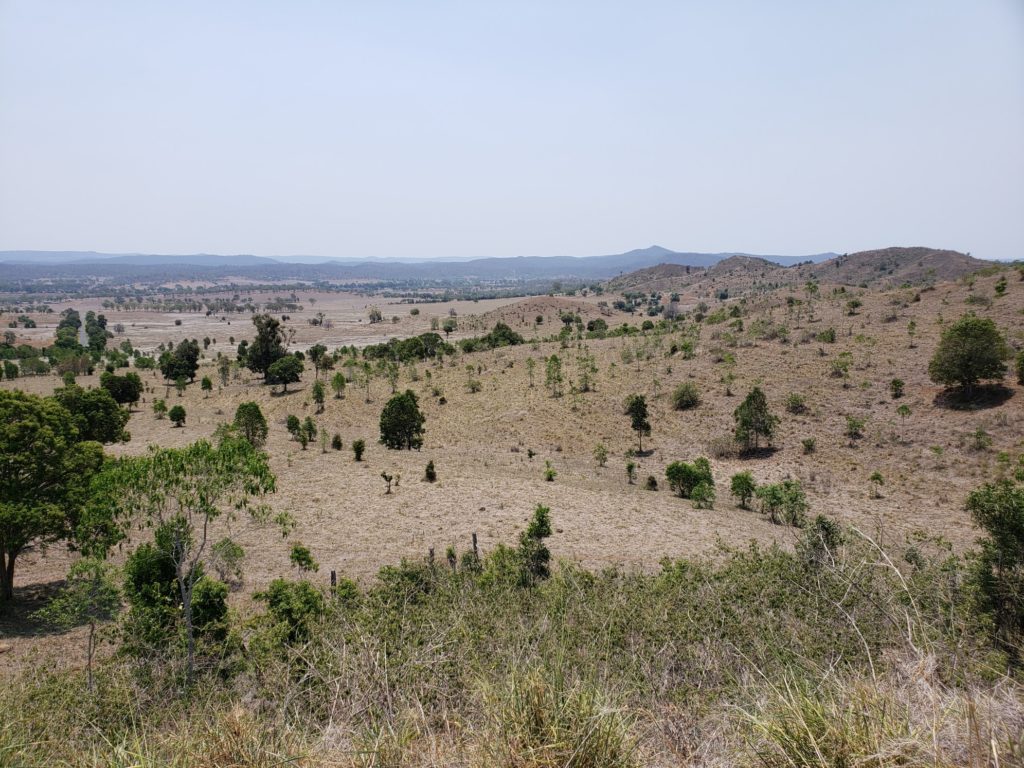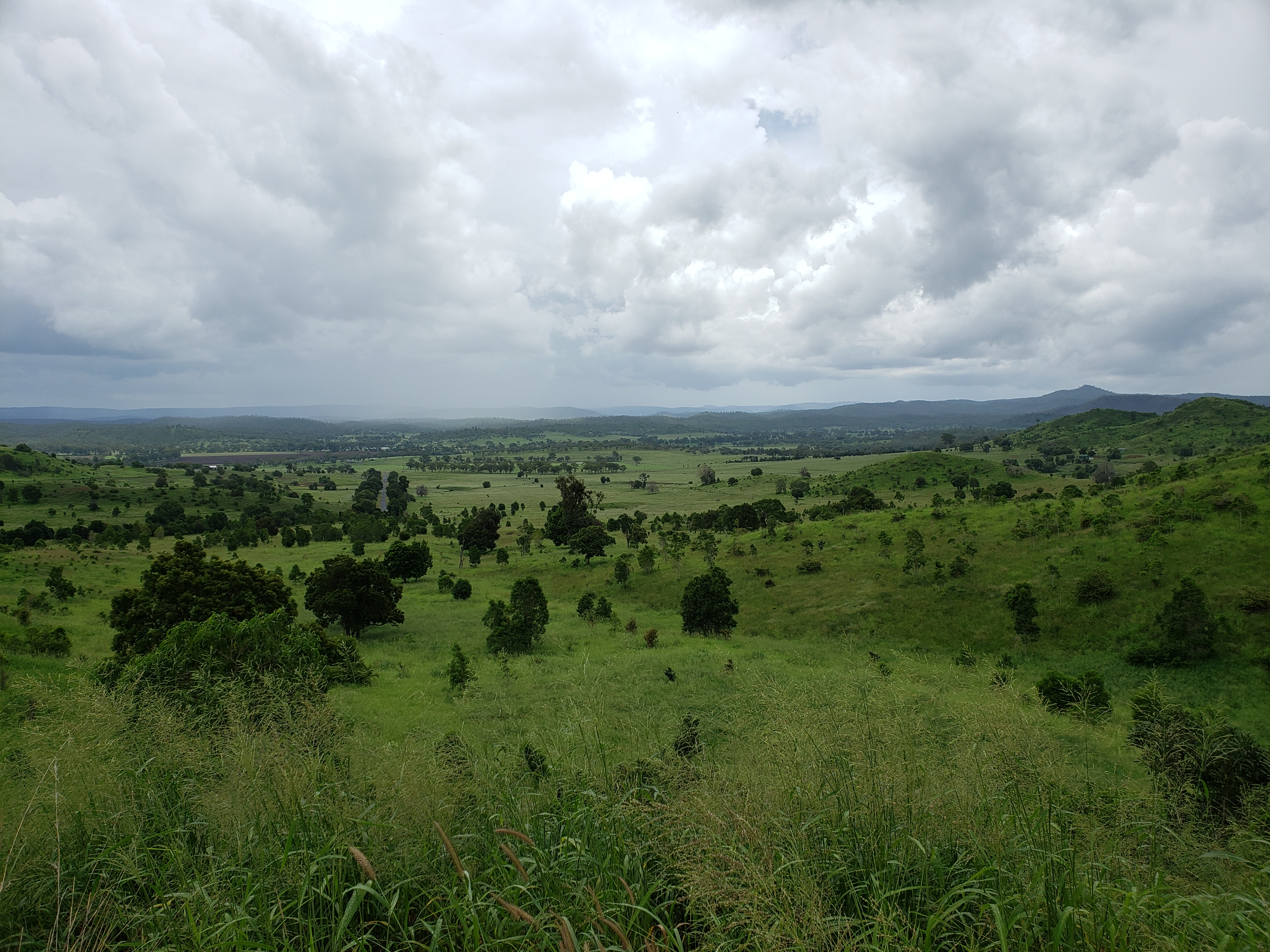Names are interesting things here. Among the most interesting names for people that I’ve heard so far are girls’ names. Among these are “Khiara, Krisenya, Kalena, and Tuula”. (Sorry Maisey!) I’m not sure where these were derived from, but certain names such as Kylie and Bindi come from word names. A Kylie is essentially a boomerang and a bindi is either a spiny weed or a decorative Hindu forehead dot depending on who you ask.
Beyond these personal names are those of various places such as Toowoomba, Thangool, Biloela, and Berserker (pronounced BUR-si-ka). The reasons for these aboriginal place names are rather similar to the reasons that there are so many Native American names used in the United States. For one thing, when colonists interacted with the locals early on, they adopted various names that the natives used. At times these may have been repeated and used as heard, as in the case of “Canberra”, which is thought to have come from a local Ngunnawal language word meaning “meeting place”. Other words may have been hard to pronounce by the settlers and so an Anglicized variation was used instead. For example the original language “Pikurdla” may have sounded like the familiar word “Piccadilly” and so the later was used in place of the former.
In other instances, the reason for using a foreign name may have been that there was a certain romanticism to using a word that was very unlike the words of your mother tongue or mother country, and so perhaps such names helped Australia to immediately distinguish itself as distinct from Great Britain. In the same way that “Cuyahoga, Monongahela, and Minnesota” have a unique non-Britishness to them, so “Kalgoorlie, Parramatta, and Woolloomooloo” sounded exotic and uniquely “of” this new and unusual place. But one thing that both the US and AU have in common is the cruel irony of displacing existing cultures and peoples while, almost insultingly, keeping their words. It seems rather a colonial slap in the face to add insult to the injury of divesting a people of their homes, native language, and way of life. Nonetheless, such linguistically singular names set the lands in which they are found apart in a very special way and make them instantly identifiable.
Then there were the names of various properties in the South Burnett region. It was not uncommon for sprawling homesteads to sit perhaps a half mile or more off from the road and so feature large signs at the mouths of driveways proclaiming their existence and marking their location. In Ohio, a house is usually identified by its number or perhaps a small placard featuring some cute, tongue-in-cheek name for the home or property. But here there was a certain romanticism attached to giving a farm or property a tantalizingly grand-sounding name and advertising it in three foot high letters against a backdrop of wide open land and blue sky. It reminded me of “Tara”, the fictional plantation name from Gone with the Wind or “Faraway Downs” , the cattle station from Baz Luhrman’s film Australia. But it’s not a purely fictional phenomena. Close to here are several such places with interesting names such as “Akubra Downs”, “Ambleside”, “Cliffdale”, and my personal favorite “Toronto”. This last one proved to be one of the more interesting stops of the day, so we’ll save it for last.
But the uniqueness of names here is second only to the uniqueness of the native fauna.
One of the things I had very much hoped to see on this trip was kangaroos, this is largely because to me they ranked rather high on the list of mythical animals I most wanted to encounter. It wasn’t that I had never come across a kangaroo before, but more so that I had never had the experience of seeing one hop across my backyard as I was having my morning coffee. What I had often seen were white tailed deer. But even with those animals there was something of an other-worldy quality to them and seeing them was always a magical experience. So imagine how much more amazing the thought of seeing marsupials in the same kind of everyday setting would be. Unfortunately, much like deer, one most often sees them lying dead at the sides of roads, due to their habit of coming out at night and moving at speed across landscapes which often feature roads. Of the many things that seemed very similar to the place I had come from, seeing a ‘roo was an instant reminder of how far away from that place I was.
One day a group came down from Gladstone, including two of the five Craigs, to help work our territory. The area we have to cover is a lot for eleven, mostly older, people. Gladstone, on the other hand, has an abundance of pioneers and they get through their maps quite often, which can make a territory feel stale after a while. This arrangement was therefor quite beneficial to both congregations. This day was to be more like what I thought everyday would be here, based on the many posts I had seen on Fiona’s Instagram before coming to Australia. Many of these had featured long, lonely dirt roads crawling over dry, brush filled hills, dead cars in the middle of nowhere, and stretches of road that doubled as plane runways. There were also windmills. These, I found, would elicit competitive shouts of “windmill!” in an attempt to spot each one first and win points. Imagine ‘”slug bug” or “punch buggy” except without violent physical contact and Volkswagens.
While driving past a petrol station that morning I noted that the price was marked $149.7. I had seen this confusing pricing convention before, and was fairly certain that gas did not, in fact, cost one hundred and forty nine dollars a gallon, but I took the opportunity to put the question to the car group. As suspected, it actually meant one dollar and forty nine cents. This made much more sense and it was actually cause for a good deal of excitement on my part. At that point in time I was still contemplating buying a car to get around in, and the price of petrol was a big question I had had. This price was much cheaper than the cost of gas back home. I expressed my delight at this turn of events…and then was reminded that this was the cost per litre of fuel. Seeing as how there are four litres in a gallon, this meant that in actuality the cost here was significantly higher. My smile vanished. Then I remembered that $6 here was a little over $3 in US money, and my smile returned. And then Covid-19 hit a month later and my plans for a vehicle completely vanished along with all car-related facial expressions. BAM!
Before getting back out into the field, here’s a quick word on irony and the water situation in Oz. The interior of Australia is a dry, thirsty place. The grass here was all brown and dead when I arrived, and although it was much greener and healthier now, it would again be brown and dead in two months. One day a brother and I were standing at a small creek waiting for the rest of the service group to arrive for morning tea, when two men pulled up in a truck and came over to talk to us. They were from the Council and apparently thought we were from company headquarters because we were wearing ties. What they said was interesting.
There is essentially an aquifer underneath Monto that provides plentiful amounts of water for the area, but it is carefully metered and rationed out. (It reminded me a bit of Immortan Joe and his “Aqua Cola”) These fellows were partly responsible for monitoring the water courses here and making sure people aren’t siphoning any off without permission. (Okay. A LOT Like Immortan Joe.) The strange thing is that while on the surface there appears to be very little water here, there’s actually plenty underground. Even though the plants may appear to be dying on the surface, the roots are often still okay because of the ever present ground water.
The real irony in this dry, thirsty land is that underneath most of bone dry Queensland is what’s known as the Great Artesian Basin, a reserve of water two thirds the size of the Mediterranean Sea and underlying 22% of the country. This could be the reason for the prevalence of floods here as well; the ground is more saturated than it looks. Whatever the case, this underground water supply is rightly regarded as an extremely important natural resource and it is thus carefully metered and managed. It’s proven a lifeline to the animals here as well as many generations of people. But the truth is that even during a drought, the rain tank at the house was generally kept full and so water was never a worry for me personally.
But water wasn’t the only thing that bubbled forth that day. Fiona herself proved to be a well spring of interesting information. Having lived in Monto her whole life and therefore having learned a great many things about local practices, she proved something of a tour guide during our foray into the bush. Maisey and Tuula were along as well and would later demonstrate their singing talents. A car group of seven was a nice change of pace, and there was plenty of conversation to go around.
One house we visited had a perfect cow skull hanging on a barn. Fiona explained that people will sometimes intentionally leave a cow head atop a meat ant mound and then cover it with a metal cage to keep scavengers away. Within a week or so, the ants will reduce this mass of flesh to a perfectly clean skull which can then be sold to tourists as a souvenir. At another house she pointed out a large machine that looked like a bulldozer on steroids. She explained that two of these would run a strong chain between them before driving in tandem through an area with small trees and scrub, pulling it all down in order to clear land for farming. At one point I was handed a mango and shown the proper way to eat it (after being laughed at for trying to simply bite into it) which involved making several slices in the flesh before turning the whole section inside out and biting off the resulting sections of meat. We saw several trees that consisted of a trunk which went up a ways and then basically became a different tree. This was due to birds depositing seeds in the tops of stumps, which then set down roots and began to grow. I wish had gotten a good picture of that.
Later on we saw a helicopter flying over a piece of land off to one side of the road and as someone was mustering cattle from the air. As you’ll recall, I had seen Tim and Khiara use motorbikes to do this, but I hadn’t seen anyone use a chopper yet, although T and K had mentioned it. In open areas, mustering on a bike was possible, even preferable, but in an area with many trees, the cattle will simply run into the woods and it will be very difficult to dodge the trees and efficiently wrangle them all. If trees were involved, then it was much more efficient to muster with a helicopter. But doing so wasn’t without its dangers. Flying very low amid many distractions and the aforementioned trees can be deadly. From 2007 to 2016 there were fifteen casualties and five accidents. It’s not just anyone who can legally jump into a gyro or copter and head out to muster. A prospective pilot is first required to take a course on aerial mustering and then follow that up with another ten hour course in the air with an approved mustering pilot. And of course this is all apart from the fact that you need to actually own a helicopter.
It was maybe a half hour after seeing the aerial muster that we stopped into a property with the sobriquet ‘Toronto’. There must be a fascination with Canada here because I had been given a ride in a brother’s ute some time ago and seen a small bear hanging from the rear view mirror wearing a tiny shirt that read ‘I love Canada’. He said he’d been there once and fallen in love with it. Anyways, we pulled up the driveway and found a small helicopter sitting next to the house. It turned out that it was the very helicopter we had seen earlier and a group of farm hands were all enjoying a well deserved lunch. The homeowner greeted us at the door and was friendly, but as we didn’t want to keep him from his lunch, we left him a tract and went on our way.
And with that our day ended. It was nice to work with Fiona, since she was the one Craig I hadn’t had much of an opportunity to get to know and I was glad to have had an opportunity to remedy that.
It was also nice to immerse myself yet again in the beauty that is the Australian language and accent. And with that in mind, perhaps a few words on the local lingo would be apropos next time. In the meantime I’m off to “Frances Bourke”. (I really ought to pay attention to the ‘use by’ dates on the milk!)
